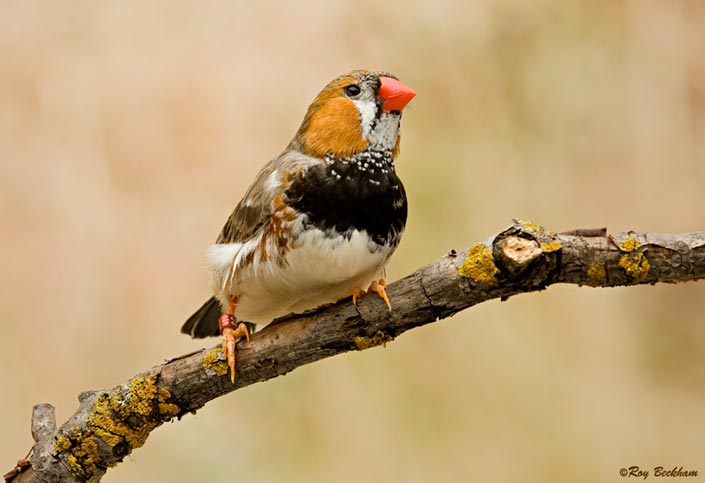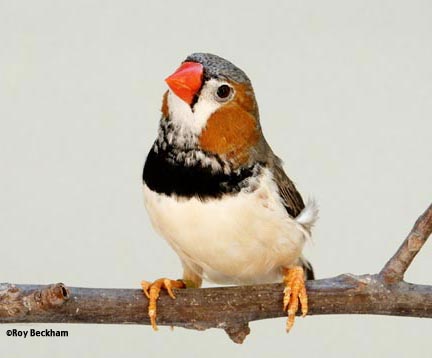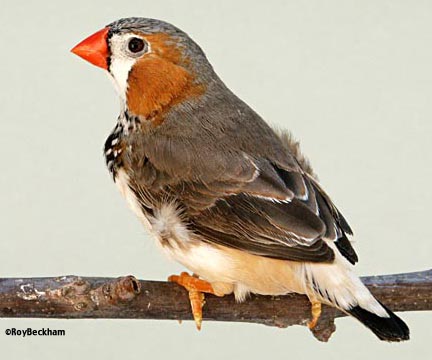




 |
|
|||||||||||||||||||||
 |
|
|
|
|
|
|
|
|
|
|||||||||||||
|
|
|
|
|
|
||||||||||||||||||
|
|
|
|
|
|
|
|
|
|
||||||||||||||
|
|
|
|
|
|
||||||||||||||||||
|
|
|
|
|
|
|
|
|
|
||||||||||||||
|
|
|
|
|
|
||||||||||||||||||
|
|
|
|
|
|
|
 |
|
|||||||||||||||
 |
 |
|
||||||||||||||||||||
|
|
|
|
||||||||||||||||||||
|
|
|
|
|
|
|
|
|
|
|
|
|
|
|
|
|
|
|
|
|
|
|
|
| Black Breasted Zebra Finch | ||||
 |
||||
| Black Breasted Zebra finch - Male | ||||
|
Mutation Effects Male: Every marking on the Black Breasted finch is altered in some way. The cheek patches are enlarged, feathering at the outer edges. The tear mark is missing. The flank spots are elongated and enlarged, sometimes to the point that it looks as though the flank has been replaced with chestnut colored spots or streaks. The upper tail coverts are buff colored and the tail bars are elongated so that they run vertically on the tail coverts (see below). The breast bar is enlarged, giving the mutation its name. Often, there is also some orange or white lacing on the wings. Female: The tear mark is missing and the rump and tail are buff colored like the males (see below). As with the males, there can be some orange or white lacing on the wings. Fledgling: Black Breasted chicks can be identified in the nest. They resemble females with buff cheeks and tail coverts. The tail lacks the bars. They look a little like Penguin Zebra finches. Black Breasted chicks in the nest (click to view)
Identifying Splits Female: The tear mark is often reduced and the tail bars have the same 'hourglass' shape of males that are split for Black Breast.
Combinations I have also been breeding birds to combine the black Breasted mutation with the other 'black' mutations - Black Face and Black Cheek. The Black Breast Black Face combination (BFBB) is really attractive with lots of orange and black on the bird. An unusual thing occurs with the Black Breast Black Cheek combination however. The cheek patches are not enlarged as you would expect them to be with any BB combination. The flanks, breast and tail all have Black Breast characteristics, but not the cheeks. This apparently applies to both sexes, although I have not produced BB BC females yet. The suppression of the enlarged cheek patch seems to also apply to the Fawn Cheek mutation as well.
Black Breasted Fawn (click to view) Notes There seems to be an inverse relationship between the size of the cheek patch and the size of the breast bar. Those that have large cheek patches, often do not show the largest breast bars and the reverse holds true as well. While it is an advantage to be able to visually identify birds that are split for Black Breast, these altered markings can be considered faults on the showbench for birds entered as normals, yet not strong enough for them to be entered as Black Breasted either. |


Black Breasted Gray male
